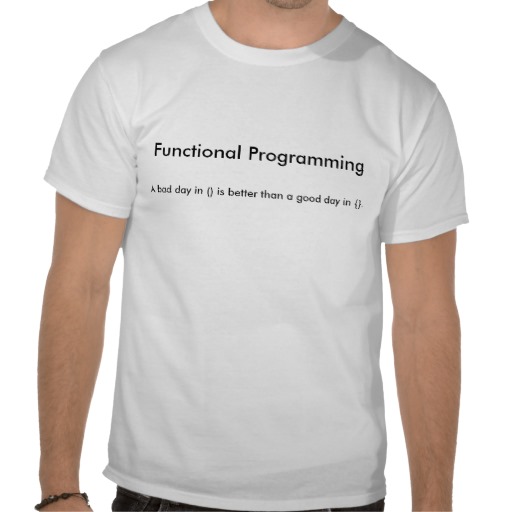Java经典类库-Guava中的函数式编程讲解

如果我要新建一个java的项目,那么有两个类库是必备的,一个是junit,另一个是Guava。选择junit,因为我喜欢TDD,喜欢自动化测试。而是用Guava,是因为我喜欢简洁的API。Guava提供了很多的实用工具函数来弥补java标准库的不足,另外Guava还引入了函数式编程的概念,在一定程度上缓解了java在JDK1.8之前没有lambda的缺陷,使使用java书写简洁易读的函数式风格的代码成为可能。
下面就简单的介绍下Guava中的一些体现了函数式编程的API。
Filter
我们先创建一个简单的Person类。
1 |
|
如果要产生一个Person类的List,通常的写法可能是这样子。
1 |
|
而Guava提供了一个newArrayList的方法,其自带类型推演,并可以方便的生成一个List,并且通过参数传递初始化值。
1 |
|
当然,这不算函数式编程的范畴,这是Guava给我们提供的一个实用的函数。
如果我们选取其中年龄大于20的人,通常的写法可能是这样子。
1 |
|
这就是典型的filter模式。filter即从一个集合中根据一个条件筛选元素。其中person.getAge() >=20就是这个条件。Guava为这种模式提供了一个filter的方法。所以我们可以这样写。
1 |
|
这里的Predicate是Guava中的一个接口,我们来看看它的定义。
1 |
|
里面只有一个apply方法,接收一个泛型的实参,返回一个boolean值。由于java世界中函数并不是一等公民,所以我们无法直接传递一个条件函数,只能通过Predicate这个类包装一下。
And Predicate
如果要再实现一个方法来查找People列表中所有名字中包含b字母的列表,我们可以用Guava简单的实现。
1 |
|
一切是这么的简单。
那么新需求来了,如果现在需要找年龄>=20并且名称包含b的人,该如何实现那?
可能你会这样写。
1 |
|
这样写的话就有一定的代码重复,因为之前我们已经写了两个Predicate来分别实现这两个条件判断,能不能重用之前的Predicate那?答案是能。
我们首先将之前生成年龄判断和名称判断的两个Predicate抽成方法。
1 |
|
而我们的结果其实就是这两个Predicate相与。Guava给我们提供了and方法,用于对一组Predicate求与。
1 |
|
由于and接收一组Predicate,返回也是一个Predicate,所以可以直接作为filter的第二个参数。如果不熟悉函数式编程的人可能感觉有点怪异,但是习惯了就会觉得它的强大与简洁。
当然除了and,Guava还为我们提供了or,用于对一组Predicate求或。这里就不多讲了,大家可以自己练习下。
Map(transform)
列表操作还有另一个常见的模式,就是将数组中的所有元素映射为另一种元素的列表,这就是map pattern。举个例子,求People列表中的所有人名。程序员十有八九都会这样写。
1 |
|
Guava已经给我们提供了这种Pattern的结果办法,那就是使用transform方法。
1 |
|
Function是另外一种用于封装函数的接口对象。它的定义如下:
1 |
|
它与Predicate非常相似,但不同的是它接收两个泛型,apply方法接收一种泛型实参,返回值是另一种泛型值。正是这个apply方法定义了数组间元素一对一的map规则。
reduce
除了filter与map模式外,列表操作还有一种reduce操作。比如求people列表中所有人年龄的和。Guava并未提供reduce方法。具体原因我们并不清楚。但是我们可以自己简单的实现一个reduce pattern。
先定义一个Func的接口。
1 |
|
apply方法的第一个参数为列表中的当前元素,第二个参数为默认值,返回值类型为默认值类型。
然后我们定义个reduce的静态方法。
1 |
|
reduce方法接收三个参数,第一个是需要进行reduce操作的列表,第二个是封装reduce操作的Func,第三个参数是初始值。
我们可以使用这个reduce来实现求people列表中所有人的年龄之和。
1 |
|
我们也可以轻松的写一个方法来得到年龄的最大值。
1 |
|
Fluent pattern
现在新需求来了,需要找出年龄>=20岁的人的所有名称。该如何操作那?我们可以使用filter过滤出年龄>=20的人,然后使用transform得到剩下的所有人的人名。
1 |
|
这样括号套括号的着实不好看。能不能改进一下那?Guava为我们提供了fluent模式的API,我们可以这样来写。
1 |
|
Guava中还有很多好玩的东西,大家时间可以多发掘发掘。这篇文章的源码已经被我放置到github中,感兴趣的可以自行查看。
Java经典类库-Guava中的函数式编程讲解的更多相关文章
- Java 中的函数式编程(Functional Programming):Lambda 初识
Java 8 发布带来的一个主要特性就是对函数式编程的支持. 而 Lambda 表达式就是一个新的并且很重要的一个概念. 它提供了一个简单并且很简洁的编码方式. 首先从几个简单的 Lambda 表达式 ...
- C#中面向对象编程中的函数式编程详解
介绍 使用函数式编程来丰富面向对象编程的想法是陈旧的.将函数编程功能添加到面向对象的语言中会带来面向对象编程设计的好处. 一些旧的和不太老的语言,具有函数式编程和面向对象的编程: 例如,Smallta ...
- Apache Beam中的函数式编程理念
不多说,直接上干货! Apache Beam中的函数式编程理念 Apache Beam的编程范式借鉴了函数式编程的概念,从工程和实现角度向命令式妥协. 编程的领域里有三大流派:函数式.命令式.逻辑式. ...
- 可爱的 Python : Python中的函数式编程,第三部分
英文原文:Charming Python: Functional programming in Python, Part 3,翻译:开源中国 摘要: 作者David Mertz在其文章<可爱的 ...
- C#中的函数式编程:序言(一)
学了那么久的函数式编程语言,一直想写一些相关的文章.经过一段时间的考虑,我决定开这个坑. 至于为什么选择C#,在我看来,编程语言分三类:一类是难以进行函数式编程的语言,这类语言包括Java6.C语言等 ...
- (数据科学学习手札48)Scala中的函数式编程
一.简介 Scala作为一门函数式编程与面向对象完美结合的语言,函数式编程部分也有其独到之处,本文就将针对Scala中关于函数式编程的一些常用基本内容进行介绍: 二.在Scala中定义函数 2.1 定 ...
- C#中的函数式编程:递归与纯函数(二) 学习ASP.NET Core Razor 编程系列四——Asp.Net Core Razor列表模板页面
C#中的函数式编程:递归与纯函数(二) 在序言中,我们提到函数式编程的两大特征:无副作用.函数是第一公民.现在,我们先来深入第一个特征:无副作用. 无副作用是通过引用透明(Referential ...
- Java中的函数式编程(二)函数式接口Functional Interface
写在前面 前面说过,判断一门语言是否支持函数式编程,一个重要的判断标准就是:它是否将函数看做是"第一等公民(first-class citizens)".函数是"第一等公 ...
- Java中的函数式编程(七)流Stream的Map-Reduce操作
写在前面 Stream 的 Map-Reduce 操作是Java 函数式编程的精华所在,同时也是最为复杂的部分.但一旦你啃下了这块硬骨头,那你就真正熟悉Java的函数式编程了. 如果你有大数据的编程经 ...
随机推荐
- rtsp 协议 详细讲解
转载自:http://www.mikewootc.com/wiki/net/protocol/rtsp.html 目录: 概述 RTSP简介 协议特点 协议细节 典型的rtsp交互过程 RTSP消息格 ...
- jqGrid学习笔记(一)
3.2.body中的代码 <!-- jqGrid table list4 --> <table id="list4"></table> < ...
- css 中 list-style-image:
用于设置<a>标签的默认格式的背景图片
- 几种不同的获取url地址的方法
通过如下的几种方法,您就可以获取访问者访问您的网站的来路,请根据需要选择适合您的方法. 一.C#代码一 string url = Request["referer"]; Respo ...
- 决策树算法(1)含java源代码
信息熵:变量的不确定性越大,熵越大.熵可用下面的公式描述:-(p1*logp1+p2*logp2+...+pn*logpn)pi表示事件i发生的概率ID3:GAIN(A)=INFO(D)-INFO_A ...
- 对CLR基本原理概念&垃圾回收机制的简单理解
前言,之前有说过C语言的函数&变量的一些基本概念,说得可能不是很好,先也把C#的.里相关的也说下,已成一统. 而说函数变量,其实主要就是GC,而GC又是CLR的主要内容,故就有了此文. CLR ...
- linux /usr/bin/ld: cannot find -lxxx
在linux环境编译应用程式或lib的source code时出现如下错误:/usr/bin/ld: cannot find -lxxx 这些讯息会随着编译不同类型的source code 而有不同的 ...
- 打印出所有的"水仙花数",所谓"水仙花数"是指一个三位数,其各位数字立方和等于该数本身。例如:153是一个"水仙花数",因为153=1的三次方+5的三次方+3的三次方。
public class Three_03 { public static void main(String[] args) { for(int i=100;i<1000;i++){ int a ...
- TCP/IP协议基础(转)
转自 http://www.chinaunix.net 作者:Bernardus160 发表于:2003-12-03 17:33:15 TCP/IP协议基础 -------------------- ...
- 将特定TD颜色改变的两种方法
方法一:取table值 方法二:使用tbody
